2. Jung Y. A Survey on the Status of Atomic Bomb Survivors and Their Healthy Life. Sejong, Korea: Korea Institute for Health and Social Affairs;2018.
5. Yamada M, Wong FL, Fujiwara S, Akahoshi M, Suzuki G. Noncancer disease incidence in atomic bomb survivors, 1958-1998. Radiat Res. 2004; 161(6):622–632. PMID:
15161358.
6. Preston DL, Shimizu Y, Pierce DA, Suyama A, Mabuchi K. Studies of mortality of atomic bomb survivors. Report 13: solid cancer and noncancer disease mortality: 1950-1997. Radiat Res. 2003; 160(4):381–407. PMID:
12968934.
7. Thompson DE, Mabuchi K, Ron E, Soda M, Tokunaga M, Ochikubo S, et al. Cancer incidence in atomic bomb survivors. Part II: Solid tumors, 1958-1987. Radiat Res. 1994; 137(2):Suppl. S17–S67. PMID:
8127952.
8. Ozasa K, Shimizu Y, Suyama A, Kasagi F, Soda M, Grant EJ, et al. Studies of the mortality of atomic bomb survivors, Report 14, 1950-2003: an overview of cancer and noncancer diseases. Radiat Res. 2012; 177(3):229–243. PMID:
22171960.
9. Lorimore SA, Coates PJ, Wright EG. Radiation-induced genomic instability and bystander effects: inter-related nontargeted effects of exposure to ionizing radiation. Oncogene. 2003; 22(45):7058–7069. PMID:
14557811.
10. Kusunoki Y, Hayashi T. Long-lasting alterations of the immune system by ionizing radiation exposure: implications for disease development among atomic bomb survivors. Int J Radiat Biol. 2008; 84(1):1–14. PMID:
17852558.
11. Gillies M, Richardson DB, Cardis E, Daniels RD, O’Hagan JA, Haylock R, et al. Mortality from circulatory diseases and other non-cancer outcomes among nuclear workers in France, the United Kingdom and the United States (INWORKS). Radiat Res. 2017; 188(3):276–290. PMID:
28692406.

12. Richardson DB, Cardis E, Daniels RD, Gillies M, Haylock R, Leuraud K, et al. Site-specific solid cancer mortality after exposure to ionizing radiation: a cohort study of workers (INWORKS). Epidemiology. 2018; 29(1):31–40. PMID:
28991003.
13. Song KY, Kim YI, Kim TJ. National Survey on Atomic Bomb Survivors. Sejong, Korea: Korea Institute for Health and Social Affairs;1991.
14. Ju YS, Jhun HJ, Kim JB, Kim JK. Non-cancer diseases of Korean atomic bomb survivors in residence at Hapcheon, Republic of Korea. J Korean Med Sci. 2006; 21(3):385–390. PMID:
16778377.
15. Aveyard P. A fresh look at proportional mortality ratios. Public Health. 1998; 112(2):77–80. PMID:
9581448.
16. Kupper LL, McMichael AJ, Symons MJ, Most BM. On the utility of proportional mortality analysis. J Chronic Dis. 1978; 31(1):15–22. PMID:
641135.
17. Ozasa K, Takahashi I, Grant EJ, Kodama K. Cardiovascular disease among atomic bomb survivors. Int J Radiat Biol. 2017; 93(10):1145–1150. PMID:
28151038.
18. Rahu K. Morbidity and Mortality Among Baltic Chernobyl Cleanup Workers: a Register-Based Cohort Study. Tartu, Estonia: University of Tartu Press;2014.
19. Oh HJ, Yang DM, Kim CH, Jeon JG, Jung NH, Kim CY, et al. Exploring mortality rates for major causes of death in Korea. Open Public Health J. 2019; 12(1):16–25.

20. Preston DL, Ron E, Tokuoka S, Funamoto S, Nishi N, Soda M, et al. Solid cancer incidence in atomic bomb survivors: 1958-1998. Radiat Res. 2007; 168(1):1–64. PMID:
17722996.
21. Grant EJ, Brenner A, Sugiyama H, Sakata R, Sadakane A, Utada M, et al. Solid cancer incidence among the life span study of atomic bomb survivors: 1958–2009. Radiat Res. 2017; 187(5):513–537. PMID:
28319463.
22. Sumner D. Health effects resulting from the Chernobyl accident. Med Confl Surviv. 2007; 23(1):31–45. PMID:
17370857.
23. Lee EJ. Bodies exposed to atomic bomb and pains - focusing on Korean atomic bomb victims. Minjok Yeonku. 2019; (73):165–185.
24. Ozasa K, Grant EJ, Kodama K. Japanese legacy cohorts: the life span study atomic bomb survivor cohort and survivors’ offspring. J Epidemiol. 2018; 28(4):162–169. PMID:
29553058.
25. Fujita S, Kato H, Schull WJ. The LD50 associated with exposure to the atomic bombing of Hiroshima and Nagasaki. J Radiat Res. 1991; 32(Suppl):154–161. PMID:
1762100.
26. Sugiyama H, Misumi M, Sakata R, Brenner AV, Utada M, Ozasa K. Mortality among individuals exposed to atomic bomb radiation in utero: 1950-2012. Eur J Epidemiol. 2021; 36(4):415–428. PMID:
33492551.
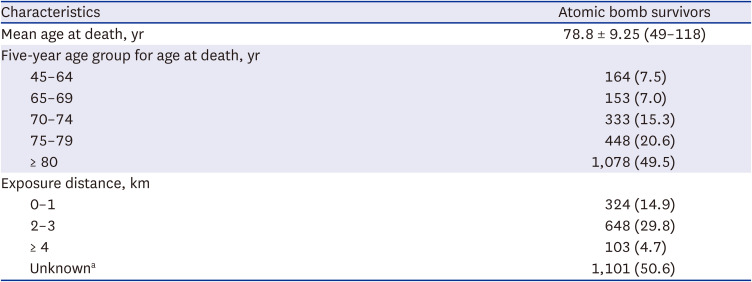
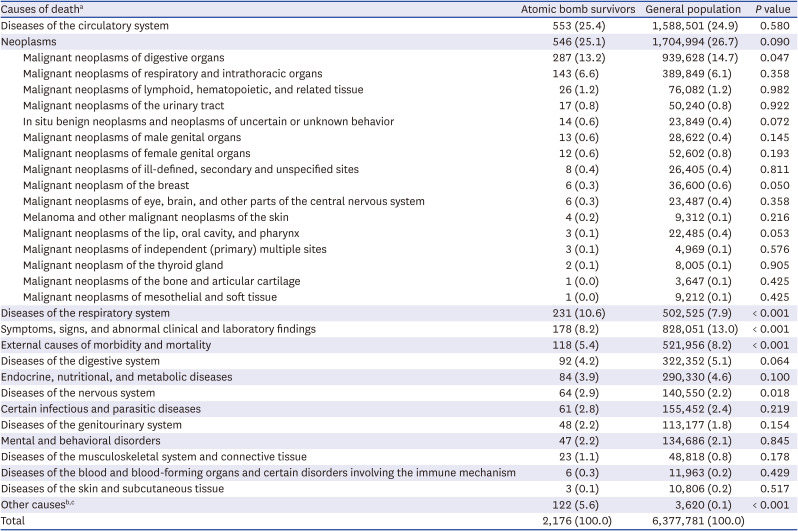
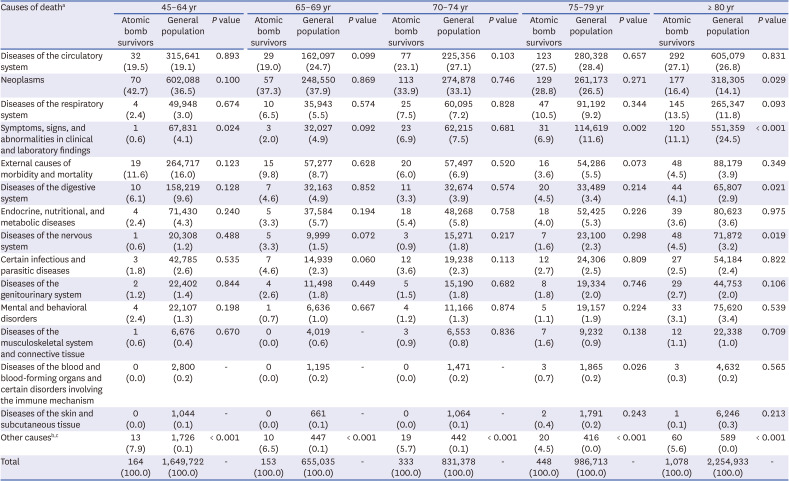
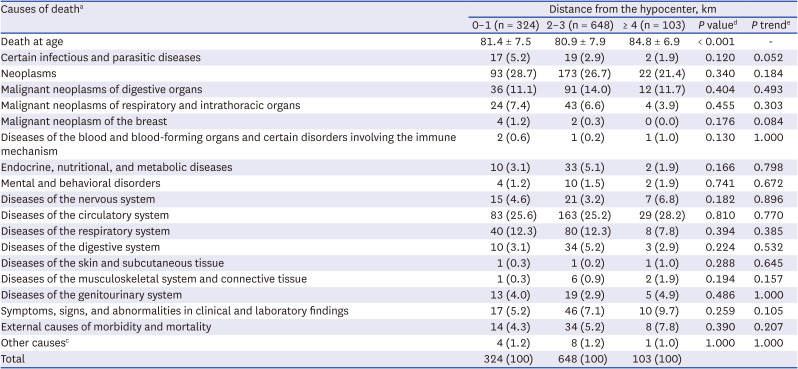




 PDF
PDF Citation
Citation Print
Print



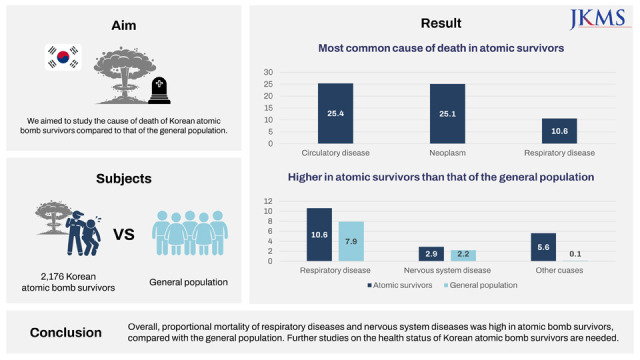

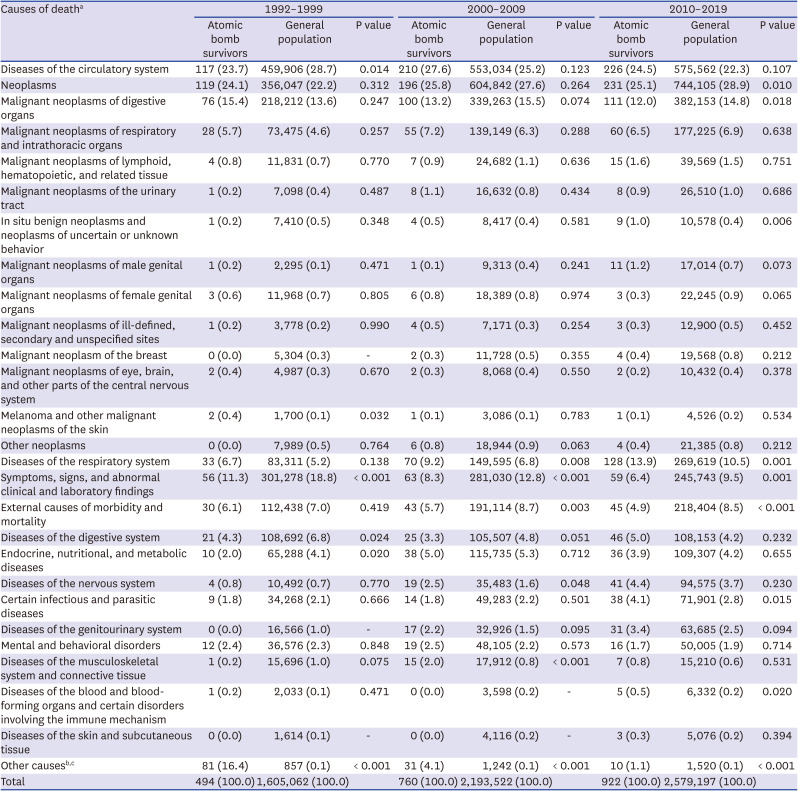
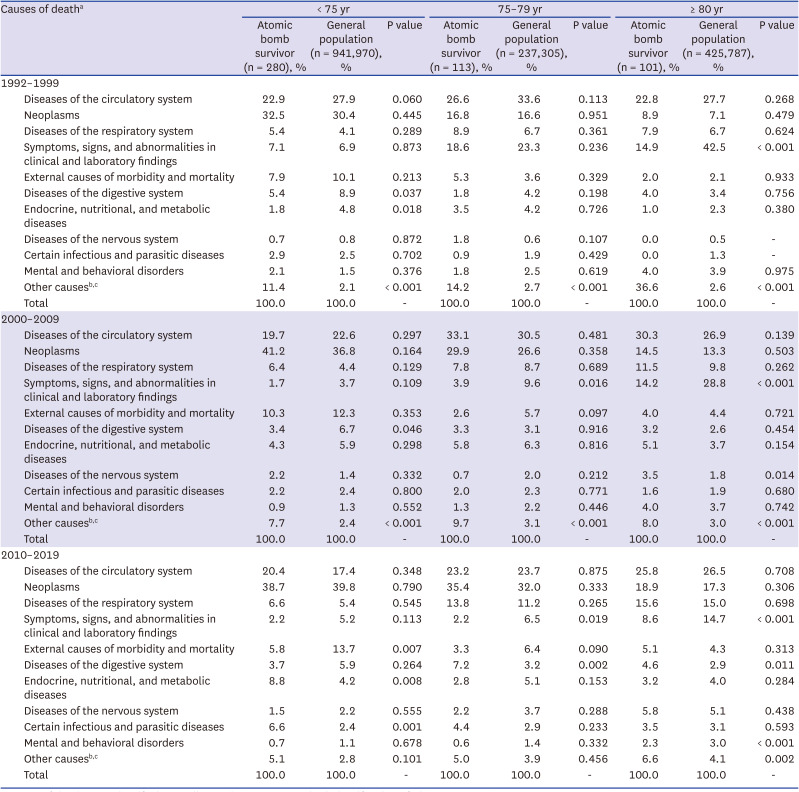
 XML Download
XML Download